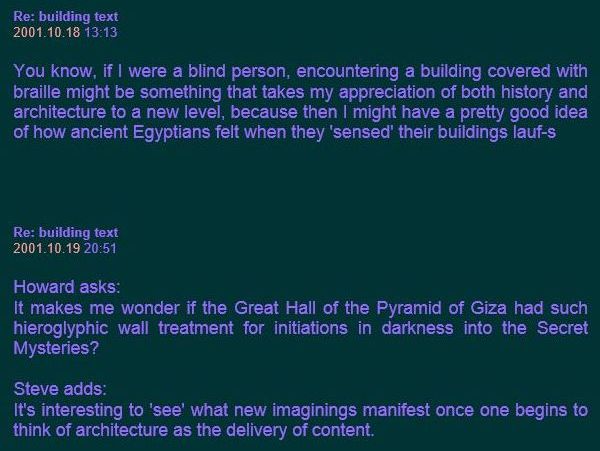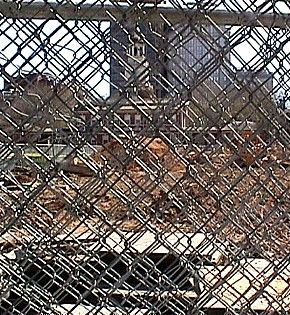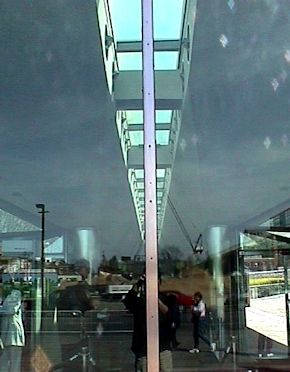2009.05.07 15:39
dissier damnatio memoriae
Not only were the words FAUSTA and UXORI erased, but they were replaced with HELENAE and MATRI. Thus, not only do we have here an example of damnatio memoriae, but an example of palimpsest as well. Question: is it a fairly common occurrance within other examples of dm for there to be a palimpsest as well, or is this more part of 'rare' damnatio memoriae subset?
Since CIL X 678 is the only extant example of Fausta's dm, I wonder if it might also be of some significance that it is actually a dm plus palimpsest. For example, could it be that Fausta's 'erasure' from memory is integral with Helena's 'inscription' into memory. Of course, on the immediate level, this tight connection appears obvious, but I'm still looking for other aspects and explanations that may enhance the understanding here. To sharpen the focus, I'm aware that there are many examples of palimpsests within inscriptions, so I'm more interested in examples where specific names/persons manifest a damnatio memoriae cum palimpsest combination.
2001
2009.05.07
dissier damnatio memoriae
"The damnatio memoriae raises facinating questions about the relationship between elite political control and collective cultural tradition, the opposition of writing history and unwritten memory, the nature of remembering and forgetting."
2000
[Could this be considered one of the new forms of damnatio memoriae, or is it an example of purging history of what didn't happen? Is there a name for the act of purging history of what didn't happen?]
2001
"From damnatio memoriae to the Cathedral of Tyre, it feels like a spotted, blurred vision becomes continually clearer. I've even found what I think will be my next late antiquity interest (once there is some Helena closure), and that is to start learning about what (really) happened when the Christian East (paradigm) shifted to Islam."
2001
"Now knowledgable of the practice of damnatio memoriae, I wonder if Piranesi purposefully 'erased' portions of the Ichnographia as a reenactment of the damnatio memoriae practice, and, like some extant examples of dm inscriptions, if he then purposefully followed up with a palimpsest (of another plan) over the erasure."
2001
"In "Remembering to Forget" one learns that damnatio memoriae actually did more to make people remember than it did to make them forget. Officially and literally, the memory was erased, however, the act of erasure itself, like the scar that it is, only reinforces the real reality that once was."
2001
2009.04.16 16:09
The Jenga Effect
"I just looked up trend spotting..."
| |
2009.04.15 12:07
Architecture and the narrative
"Narrative is one thing, literacy another."

2009.04.01
infrastructure architecture
"Philadelphia, the city within which I continue to live and work, was at that time also going through a infrastructural transition, particularly with regard to the beginning of the long awaited implementation of the planned cross-town Vine Street Expressway and it connection to Interstate 95. The new super-road, which is half sunken and half raised in the air, comprises massive retaining walls and great elevated ramps. For me, these enormous structures embodied a new urban monumentality, although I doubt many others shared the same impression.
There were indications, however, that I was not totally alone in my appreciation of "highway architecture" and its potential of holding a positive position within contemporary urban design."
Can one legitimately call Le Corbusier's Palais des Congrès, Stirling's Wallraf-Richartz Museum, and OMA's Library for Jussieu infrastructural architecture?
| |
2009.03.26 11:39
Their house is a museum, when people come to see 'em

Independent Hyperbole 001

Independent Hyperbole 002

Independent Diptych
| |
2009.03.26 11:02
Their house is a museum, when people come to see 'em
Log 15 is a slice through the present, featuring the current work and thinking of some of today's leading [really!?!] architectural historians and theorists: Barry Bergdoll, Mario Carpo, Jean-Louis Cohen, Beatriz Colomina, Hubert Damisch, Peter Eisenman, Kurt Forster, Mark Jarzombek, Irving Lavin, Sylvia Lavin, Mark Wigley, and Mirko Zardini. Assembled to honor Phyllis Lambert on her 80th birthday, these essays range from an architectural and archaeological reading of Chris Marker's post-apocalyptic film La Jetée to Dravidian architecture in India; from Gordon Matta-Clark's erasure of architecture to the persistence of asphalt; from the influence of Andy Warhol on ambient architecture past and present to the house in the museum and the museum in the house.
Barry Bergdoll (in a virtual museum) homes in on the museum
Mario Carpo searches for an author
Jean-Louis Cohen goes underground with Chris Marker
Beatriz Colomina finds the museum at home
Hubert Damisch adds to a means of subtraction
Peter Eisenman paints himself into a corner
Kurt W. Forster reopens the book on architecture
Mark Jarzombek pursues the conceptual
Irving Lavin pairs up architectural patrons
Sylvia Lavin reintroduces Andy Architect
Mark Wigley channels Gordon Matta-Clark
Mirko Zardini pounds the asphalt
Re: being/critical
2002.04.11 17:27
Museum smile--say (Seagram's) whiskey.
Hey R, remember when we had champagne and snacks with Phyllis Lambert at her Montreal loft in Fall 1979? Weren't there like long, white shear draperies hanging all over the place. It's kinda funny to think that she had absolutely no idea what we were doing there. Didn't we also like rudely leave when we got bored? (Those draperies turned out to be useful for something.) [true story]
Went down to Independence National Park this afternoon. Wanted to take pictures of the 1976 Liberty Bell pavilion (Mitchell/Guirgola Architects) before it becomes completely quondam when the Bell is moved to its forthcoming new home in Spring 2003. With all the news about the first Executive Mansion (with slave quarters) of the USA, you would think that the plans to demolish the present Liberty Bell pavilion would be rethought (as I mentioned before).
Anyway, all the historic shrines are now barricaded and guarded (since 9-11), so I took pictures of this latest layer of American shrine history as well.
Palimpsest is not exactly apposition because an erasure occurs before something new is applied. Apposition occurs within palimpsest when traces of the erasure begin to be seen again.
R, weren't you at Independence National Park at 12 midnight 1 January 1976 when the Liberty Bell was moved to the new pavilion?
What's really artistic about self-collecting is its ongoing nature as an unfinished work in progress (like the only worthwhile art that JY writes of). Self-exhibiting is artistc for the same reason. Here's one of the treasures I've collected: [a link that no longer exists]
|